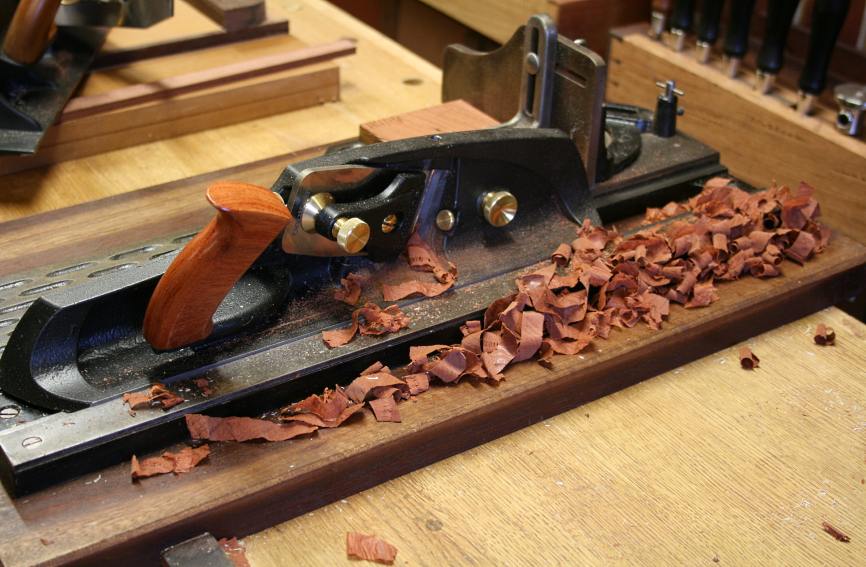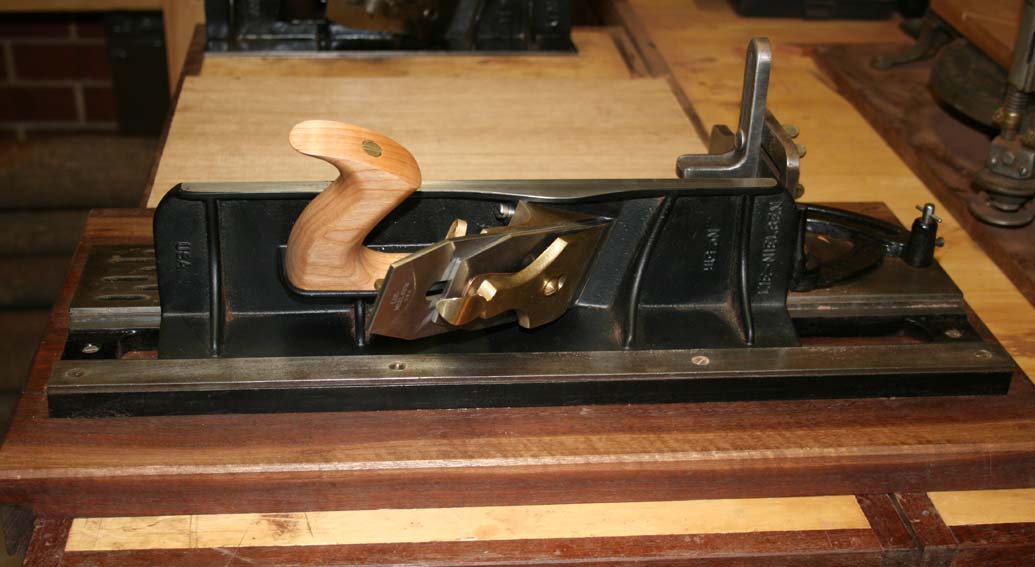Chris Knight
Established Member
I have a couple of shooting boards that have served me faithfully for many (fifteen or so) years but on a recent job, I realised that my mitre shooting board was losing accuracy and I got fed up with correcting it by shimming work-pieces with scraps of paper and playing cards. As it is close to Christmas, I decided to treat myself and bought a Veritas shooting plane and shooting board.
I had anticipated lots of setting up would be needed and indeed the two sets of instructions that came with the plane and shooting board suggested that some preparatory work was in order. As it turned out, all I had to do was hone the 25 degree secondary bevel on the supplied iron for the plane and I was good to go. The mitre assembly on the shooting board was a perfect 90 degrees and the track for the plane was set to the width of the shooting plane with just enough microscopic clearance to permit smooth operation without a hint of sideways movement.
The shooting plane itself is a beautiful piece of engineering. Everything is as it should be. The side and sole of the plane both register 90 degrees exactly with my Starrett squares, the movable toe works smoothly and precisely, and my first couple of cuts have been effortless and flawless.
Possibly a Lie-Nielsen 51 would be as good a shooting plane but for only a tenner more, I get both a plane and an excellent adjustable shooting board, and I honestly cannot see how the Lie -Nielsen could be better. For one thing, it lacks the adjustable toe of the Veritas but more simply, I see nothing on the Veritas that could be bettered - fit, finish, tolerances etc. are all superb. And, were I to price my time realistically, a new shooting board I make would cost a good deal more than £10.
I lusted after a Stanley 51 and 52 for years (as a user rather than a collector) but now with the Veritas duo, that itch has been quieted at long last.
I had anticipated lots of setting up would be needed and indeed the two sets of instructions that came with the plane and shooting board suggested that some preparatory work was in order. As it turned out, all I had to do was hone the 25 degree secondary bevel on the supplied iron for the plane and I was good to go. The mitre assembly on the shooting board was a perfect 90 degrees and the track for the plane was set to the width of the shooting plane with just enough microscopic clearance to permit smooth operation without a hint of sideways movement.
The shooting plane itself is a beautiful piece of engineering. Everything is as it should be. The side and sole of the plane both register 90 degrees exactly with my Starrett squares, the movable toe works smoothly and precisely, and my first couple of cuts have been effortless and flawless.
Possibly a Lie-Nielsen 51 would be as good a shooting plane but for only a tenner more, I get both a plane and an excellent adjustable shooting board, and I honestly cannot see how the Lie -Nielsen could be better. For one thing, it lacks the adjustable toe of the Veritas but more simply, I see nothing on the Veritas that could be bettered - fit, finish, tolerances etc. are all superb. And, were I to price my time realistically, a new shooting board I make would cost a good deal more than £10.
I lusted after a Stanley 51 and 52 for years (as a user rather than a collector) but now with the Veritas duo, that itch has been quieted at long last.



































